
Guide
Garden furniture: materials at a glance
by Pia Seidel

The protective screen transforms an outdoor space into a haven of peace. It provides protection from prying eyes, while giving the space a new lease of life.
So that you don't have to forego an intimate atmosphere outdoors, there are many ways of blocking the view to the sides, top or bottom: the protective screen - acting as a screen and noise barrier - lets the light through, so you can enjoy the sun's rays in peace and quiet. Depending on the material chosen, the plant corner will add a decorative touch to the space. Reed, textile or plastic, whatever the material, a protective screen will add character to your garden or balcony.
Some can be assembled, while others, already assembled, can easily be moved here and there. Before making any changes, such as those required to install a fixed awning, it's best to contact your property management to get the green light. Note also that weather-resistant materials are a must if the outside area is not covered. Here they are:
On city balconies, it's a good idea to create a lowered corner by opting for lounge-type furniture, an outdoor rug, pallet cushions or even a deckchair for the cozy atmosphere.
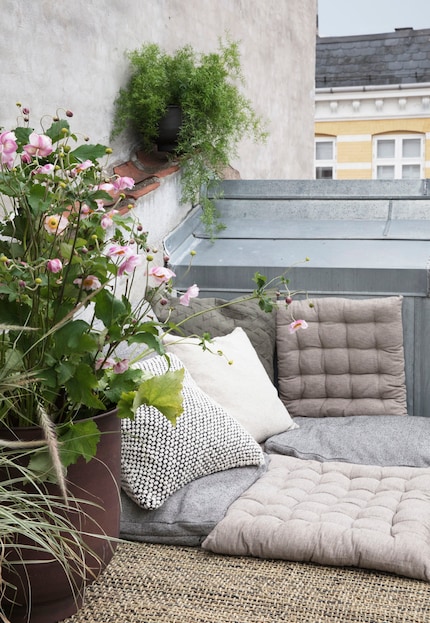
If the balcony parapet is openwork, cover it with plants, lattice fencing or textiles! Beach towels, for their decorative appeal, can easily be diverted from their primary function by being attached, in a jiffy, to the balustrade.
textiles, such as wall-to-wall rugs, provide a little privacy; for this, you can hang one large one or several smaller ones. Macramé hanging systems, also available for plants, bring your balcony to life as they sway in the wind. And what's more, it's pretty to look at.
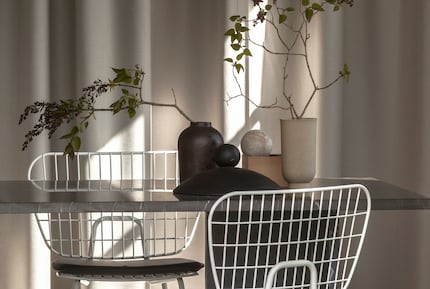
Evident yet uncommon in such a context, curtains are precisely the way to create a private sphere on a balcony or in a covered garden. Like their indoor counterparts, they add a touch of comfort. The curtain rods can be removed when you move house and reassembled in your new flat. The advantage of this option? You only close the curtain - opaque or perforated - when you need to.
Some tents, which can be used as a canopy on a balcony, are easy to hang up and can be fixed to the sides to protect you from the view. They are often found in the children's section. That said, the designs are so versatile that adults love them too.
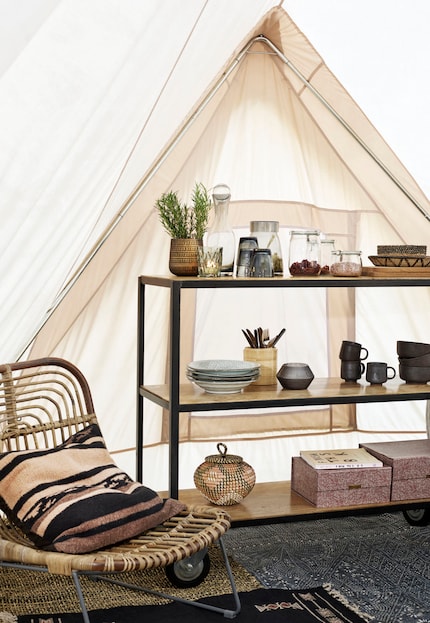
If putting up a curtain or tent seems insurmountable, then try stretching a piece of fabric, such as linen, over wooden slats unearthed in a DIY shop using a electric stapler! Make sure the partition rests on its two feet in the event of a gust.
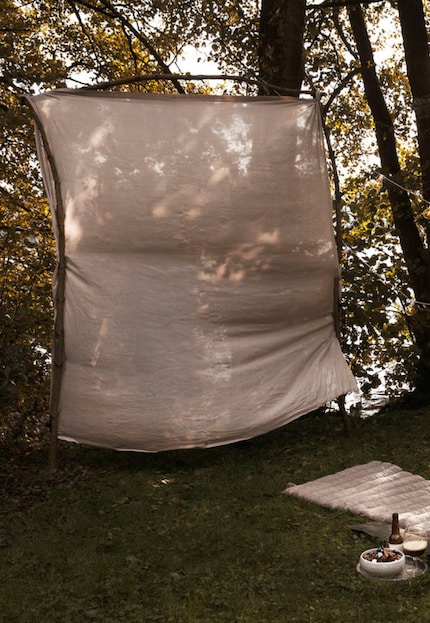
The paravents - commonly used in China around 220 AD - provided protection from wind and noise. Nowadays, these movable partitions have taken up residence in our homes. As a result, their materials are not always suitable for outdoor use. So check the specifications to see if you can install them outside. If in doubt, install a screen only if necessary or only in covered outdoor areas. The same applies to shelves, which can work very well as a privacy screen by placing plants on them, for example, a bit like a vertical garden punctuated by storage boxes here and there.
The much-loved plants transform the balcony into a lush oasis, away from prying eyes. What's more, they'll add a personal touch to your protective screen. To do this, arrange several plants or trees in pots as high as possible next to each other, all along the balustrade to enhance the overall aesthetic.
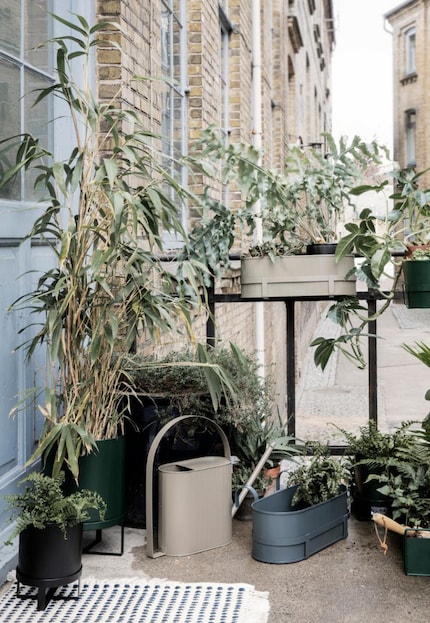
In urban planning, plants are often used to green up a facade. To do this, use palisades and grilles so that climbing plants can flourish. Some pots incorporate this type of system, making it easier if you ever need to move. For roses, on the other hand, prefer arches.
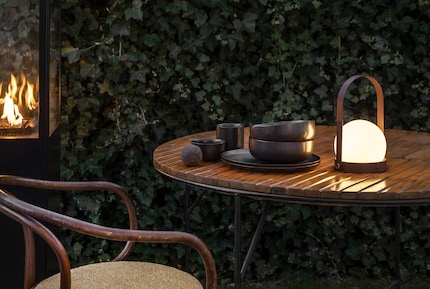
The hedges of beech or ivy remain bushy until winter. In late autumn, the leaves turn brown and partly fall off. Evergreen ivy, on the other hand, is available by the linear metre. The advantage? You don't have to wait very long for your wall to be completely green. Another solution? The plant staircases, which allow you to place the pots vertically. Don't forget that the tallest pots need to be heavy enough to withstand a gust of wind.
If your outdoor space is devoid of an awning, then kill two birds with one stone with a shade awning or a parasol! You'll be protected both from the sun's rays and from prying eyes. When choosing the parasol, make sure it has a tilting function to create more privacy on the side.
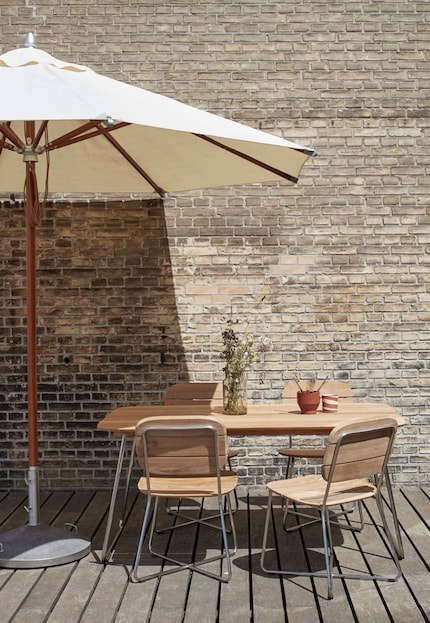
The pergola offers shade thanks to its vegetation. Deciduous climbing roses, laburnum and wisteria are very popular in summer. Ivy, on the other hand, grows quickly and stays green all year round.
Finally, consider fences and partitions to protect you from prying eyes. Made from natural materials, metal or plastic, these, unlike the variants mentioned above, are assembled. Wooden or plastic slatted fences, which are particularly light thanks to the woven wire, are available in several heights and with different horizontal spacings. Like bamboo, willow and reed mats, they are often used on balconies.
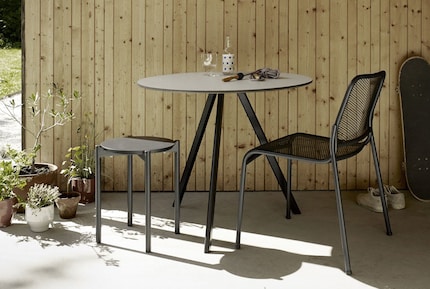
The advantage of partitions is that they hide from view and provide a barrier against noise. Is a wooden partition not for you? Have you thought about rocks, which can be stacked to make your garden look spectacular?
Like a cheerleader, I love celebrating good design and bringing you closer to everything furniture- and interior design- related. I regularly curate simple yet sophisticated interior ideas, report on trends and interview creative minds about their work.
Practical solutions for everyday problems with technology, household hacks and much more.
Show all